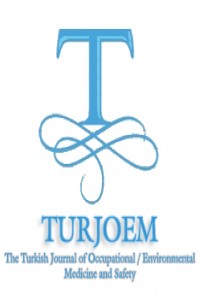Öz
Pollen has an important place among aeroallergens in terms
of their role in allergic diseases Pollen allergy has a remarkable clinical impact all over world. The
pollen from the plants that cause allergic diseases depends on the flora and
climatic conditions of the region. Grass pollen is the major cause of
pollinosis in many parts of the world. Because of its climatic conditions, characterized by mild winters and
sunny days with dry summers, Turkey has variable different
phytogeographical regions differring in climates climates as well as vegetation
cover. Therefore, the density and diversity of pollen in the atmosphere show
regional differences. The country possesses an enormous floristic wealth.
Approximately over 10.000 plant taxa show distribution in the country which is
very close to the number of taxa distributed in the whole of European continent. The potential allergenic
effects of atmospheric
pollens on human
health have been divided into different categories as taxa with highest,
medium, lowest allergenic effects. The
pollen allergy incidence shows variation all over the
world, depending on the countries and
different climates. The most important factor in pollen allergy, is the
composition of the pollen in the air. The pollens from different plants show
different allergic degrees in humans. Pollen allergy symptoms show a good
correlation with atmospheric pollen counts. Therefore, an identification of the
pollens from different plant taxa causing allergic reactions proves of great
help in this connection. A qualitative and quantitative analysis of the
atmospheric polen with environmental factors, is important for the
characterization of both pollens and polen allergies. Recent studies have demonstrated that
urbanization, high levels of vehicle emissions and westernised lifestyle are
correlated with the increasing frequency of pollen-induced respiratory allergy
and people who live in urban areas tend to be more affected by pollen-induced
respiratory allergy than people living in rural areas.
Kaynakça
- Aysel Kekillioğlu, Ebru Kunduracı, H.Kübra Kekillioğlu
- Nevşehir Hacı Bektaş Veli University, Faculty of Arts and Sciences, Department of Biology, 50300, Nevşehir, Turkey Gazi University, Faculty of Engineering and Architecture, Ankara Turkey
Öz
Kaynakça
- Aysel Kekillioğlu, Ebru Kunduracı, H.Kübra Kekillioğlu
- Nevşehir Hacı Bektaş Veli University, Faculty of Arts and Sciences, Department of Biology, 50300, Nevşehir, Turkey Gazi University, Faculty of Engineering and Architecture, Ankara Turkey
Ayrıntılar
| Bölüm | Articles |
|---|---|
| Yazarlar | |
| Yayımlanma Tarihi | 16 Şubat 2017 |
| Yayımlandığı Sayı | Yıl 2017 Cilt: Volume 2 Sayı: İssue 1 (1) - 2.İnternational Congress Of Forensic Toxicology |


